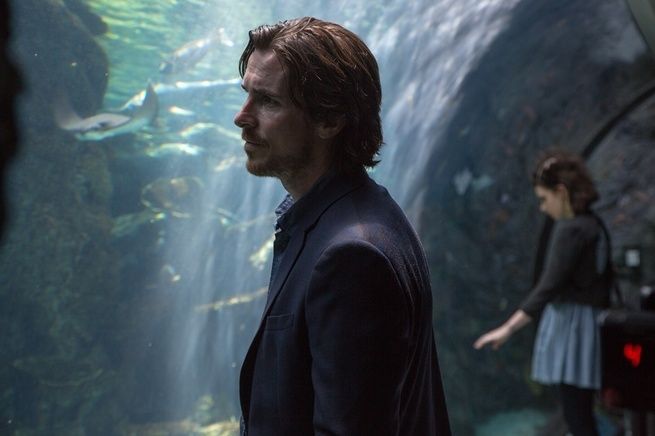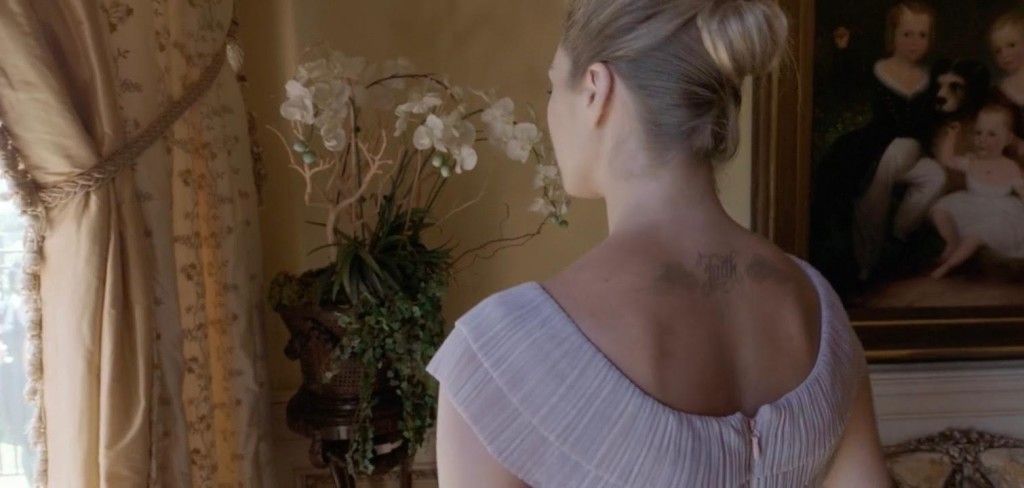“Initially,” Vladimir Nabokov writes in his autobiography Speak, Memory, “I was unaware that time, so boundless at first blush, was a prison.” Human consciousness seeks the infinite in the finite. It inevitably falls short. It always misses the mark. It is always unfulfilled. And even if fulfillment is found, death quickly slams the door shut. The unhappy consciousness clings like a shadow to every fleeting pleasure. After dizzying Dionysian dithyrambs in Vanity Fair, we throw ourselves into various penumbral stoicisms or melancholy gnosticisms, world-weary with promising pleasures that tease to taste but never satiate. The carnival cannot sustain itself. What we desire and how we desire determine the contour—the meaning—of our world. We move throughout various worlds at differing stages of life, searching each world for something we seem to have lost. We know only enough to know we are lost. To know that we are lost, however, is the beginning of a quest. Not to know is to be in despair.
At the top of the American poster for Terrence Malick’s new film Knight of Cups are two words: A Quest.
A quest for what?
Before considering what this quest might be, I should confess that I am a rather reluctant reviewer of Terrence Malick films. I feel guilty of Wordsworth’s lines from The Tables Turned: “Sweet is the lore which Nature brings; / Our meddling intellect / Mis-shapes the beauteous forms of things:— / We murder to dissect.” Spotting allusions can become tiresome, often occluding the visceral experience involved in watching Malick’s films; yet we always interpret the world through a particular grammar of experience, a grammar that is formed by what we attend to in our lives. I cannot easily be rid of the structure of consciousness that experience has shaped for me. For both imponderable and ponderable reasons, I find that Malick’s images strike a deep chord with my experience of the world.
Malick’s films are difficult in form, requiring a disciplined attention-span almost unheard of in today’s film industry. (Gone are the days of Robert Bresson, Andrei Tarkovsky, and Ingmar Bergman.) Malick’s films hurt my head, like great literature he demands every synaptic firing my poor mind can muster. Much of these features are attributable to what Christopher Nolan has said about Malick’s cinematic language:
“When you think of a visual style, or the visual language of a film, there tends to be a natural separation between the visual style and the narrative elements—but with the greats, whether it be Stanley Kubrick or Terrence Malick or Hitchcock, what you are seeing is an inseparable, vital relationship between the image and the story it is telling.
“One great part of human existence,” James Joyce wrote, “is passed in a state which cannot be rendered sensible by the use of wideawake language, cutanddry grammar and goahead plot.” Malick’s films are trying to catch glimpse of this “great part of human existence”. The task is surely bound to leave many viewers icily unmoved. Nevertheless, Malick’s moving-images have always been tediously and consciously chosen and meditated upon, they are far from arbitrary. Yet part of the reason for Malick’s recent ill reception is quite simply because he is making movies that assume an affinity with the traditional arts and philosophy, particularly those with deeply Christian elements. In a decidedly post-Christian world, Malick’s meaning-rich images will simply flitter by, unperceived and, possibly, unwanted. Critics are understandably at a cultural loss here; akin to an American child hearing Swahili for the first time, they simply mistake immediate incomprehension with empty gibberish. For example, before writing off the last scene of The Tree of Life as a Prozac commercial for heaven, perhaps critics ought to have read Dante’s Commedia, particularly canto thirty of Paradiso, and understood that Malick is doing something strikingly similar, conjuring up images directly from its pages. Malick’s films are chockfull of allusions, it’s as if James Joyce, Dante, and Kierkegaard sat down and decided to make a film together. The result is an inexhaustible treasure that rewards multiple viewings year after year.
The Knight of Cups (from here on Knight), along with The Tree of Life and To the Wonder, form a type of Kierkegaardian trilogy. Like Ingmar Bergman’s great trilogy (Through a Glass Darkly, Winter Light, and Silence), they have a deep thematic undercurrent uniting them. They are all quests for, or movements toward, divine grace in the midst of a not so graceful world of suffering and evil and disappointment and despair.
Knight is a pilgrimage, and Malick wastes no time telling us this. The film opens with Rick in a wilderness. The voiceover is verbatim from the opening of John Bunyan’s Pilgrim’s Progress: “The Pilgrim’s progress from this world to that which is to come: Delivered under the similitude of a Dream wherein is discovered, the manner of his setting out, his dangerous journey; and safe arrival at the desired country.”
Rick is a pilgrim caught in a dream, a stranger in the world, half in love and half miserable with his experiences of sensual dreamscapes. He is Don Juan in Hell. After the Pilgrim’s Progress opening, Malick frames Rick within the story of the old Eastern Christian Hymn of the Pearl (also known as The Hymn of the Soul) about a prince lost in a foreign land who has forgotten that he is the son of a king, forgotten the Pearl, his soul. Wojciech Kilar’s Exodus is fittingly playing. Rick is a prodigal son, flopping around half-consciously with half-naked models pouring champagne on his head. He’s enthralled with pleasure, like us all, yet he wears this look of numbed stupor on his face. He looks completely lost. It just all feels so good and false at the same time.
There are so many scenes in Knight that conjure up motifs from Kierkegaard’s Either/Or that I find it difficult to imagine Malick hasn’t used the text for inspiration. Rick shares multiple qualities with Kierkegaard’s complex portrayal of the aesthete, who is something of a flaneur. Similar to the Seducer from the Seducer’s Diary (part of Either/Or), Rick is bewitched with the momentarily “interesting”. He is fearful of commitment and familiarity, abhorring anything that induces boredom. To flee ennui he must work himself into a frenzy of sensual experience, an experience which becomes difficult—indeed impossible—to sustain. Hence Malick has plenty of scenes mirroring what Kierkegaard’s young aesthete calls actiones in distans (actions at a distance), or proxies to keep “interesting” experience from dying. The more Kierkegaard’s Seducer pursues Cordelia, his desired lover, the more he is caught up in the gaze of other women and couples, using the freedom that unfamiliarity and novelty supplies the imagination with to fuel the fantasy of Cordelia, whom he loses interest in the more she becomes familiar. The Seducer doesn’t want love, he wants to experience the mood of falling in love. At one point, Kierkegaard’s Seducer reads Plato’s Phaedrus to inspire erotic feeling, he must conjure up exciting fantasies to project onto his fading interest in Cordelia. He is not unlike those who use role-play in bed to guard against boredom.
In order to keep up the excitement of fantasies and dreams, Rick, like Kierkegaard’s Seducer, must “play shuttlecock with the whole of existence”. He must keep a constant rotation of new experiences, women, to keep the horror of boredom at bay. These ideas are expressed in the essay “Rotation of Crops” in Either/Or, whose embodiment in Knight is Tonio (Antonio Banderas), who arrogantly says: “They [women] are like flavors, sometimes you want raspberry, then after a while you get tired of it, you want some strawberry.”
Rick is caught in a purely aesthetic existence, slumbering in fragments of fantasy while whispers of a world of actuality beckon from (mostly) feminine figures. Like Christian from Pilgrim’s Progress (is it an irony that Malick chooses Christian Bale?) and Dante, he needs to awake from his slumber and set forth on an odyssey of the soul. But he cannot do it alone, he needs guides to help shake off the allure of unreality.
Rick’s first lover, Della, is a young, worldly-wise/punk-rockish beauty. She’s as wise as a serpent and gentle as a dove. She can read Rick’s soul: he’s a weak charioteer with broken wings, unable to steer his two steeds—his two wills—and he gives way to the steed of wanton pleasure. Like Dante’s damning of Ulysses for being obsessed with experience rather than the journey’s goal, Della tells Rick: “You don’t want love. You want a love experience.” In my favorite line of Della’s, she exhorts: “Love, and do what you want. A saint said that.” The saint of course is Augustine, and like the African bishop in book seven of the Confessions, Rick begins his pilgrimage within a region of unlikeness (regio dissimilitudinis), where everything is confused and superficial. To put an image on this, Malick has a bizarre scene of a topless girl in a gyre of stilted movements wherein it becomes difficult to tell the difference between her front and back sides. She wears a mask of herself, a false self. This scene is immediately followed by a mountainous landscape with the light at its summit, exactly like the beginning of Dante’s Purgatorio. An arduous climb toward transcendence is implied.

At one point, Rick and Della visit the Aquarium of the Pacific, and Rick is watching the fish swim upward toward the light while Charles Laughton’s reading of Plato’s Phaedrus seamlessly weaves the images together, a dialogue on the nature of love and the soul, and the role of recollection and beauty for the growth of the soul’s wings:
“Once the soul was perfect and had wings and could soar into heaven as only creatures can. But the soul lost its wings and fell to earth, there it took an earthly body, and now while it lives in this body no outward sign of wings can be seen, yet the roots of its wings are still there and the nature of these is to try to raise the earthbound soul into heaven. When you see a beautiful woman or a man, the soul remembers the beauty it used to know in heaven and the wings begin to sprout and makes the soul want to fly but it cannot yet, the man is still too weak, so the man keeps staring at the sky like a young bird. He has lost all interest in the world around him.
The beginning of the soul’s growth begins in recollection, memory’s flight away from this world toward the eternal verities of Beauty, Goodness and Truth. In the great Christian odysseys of the soul—Augustine’s Confessions and Dante’s Commedia come to mind—there is a deep respect for, and synthesis of, ancient Greek philosophy. However, what Augustine said he did not find in Plato was the Word made Flesh. While a flight from this temporal world was a necessary movement for faith, it was not, according to Augustine, a sufficient movement. As Augustine writes: “Think of the burden of Christ as being like the burden of wings for birds. As long as a bird is burdened by wings, it can fly. Without wings it is trapped on earth. The wings carrying us to Christ are the commandments to love God above all and our neighbor as ourself. To the extent that you use these wings, you will lift up your heart.” In order to grow wings we must love (“wings of charity”, Augustine calls them), which requires a flight toward the Infinite in order to see and love God’s image in the finite, one’s neighbor.
The heart of Kierkegaard’s oeuvre is a reshaping of these Platonic and Augustinian themes into a unique, complex literary form. Not surprisingly, given that Malick is a Kierkegaard scholar who has used portions of Kierkegaard’s work verbatim in his last two films, there is a deep Kierkegaardian undercurrent guiding the structure of Knight as well. I think it is fair to say that Knight is a quest for faith in a distinctly Kierkegaardian key.
It is a subtle key, for sure. But a plethora of hints can be found. In a wonderful scene of Rick roaming restlessly through a palatial party, we hear hidden amidst a polyphony of voices: “I’ve always enjoyed the company of women …”—the camera then catches glimpse of “faith” tattooed on the back of a woman—the voice continues: “they are closer to the mystery”. The camera, purposely, does a double take of the woman and her tattoo, as if evoking Kierkegaard’s metaphysical movement of repetition, the essence of which is the movement of faith. Similarly, it was Kierkegaard’s belief that woman was closer to God, and therefore man must follow her in order to learn the movements of faith, for it is the woman who knows how to live both in sensuousness and spirit, in the ideal and the real; which, again, is the definition of repetition. To make the movement of repetition is synonymous with the movement of faith. (We get more from the Danish word for repetition—gjentagelsen—literally meaning “to take again”: a double take. Hence the “double takes” of scenes in To the Wonder and now in Knight.)

There is simply too much going on in Knight to delve into with any great depth. I merely want to point out a few more scenes that fortify the Kierkegaardian movements latent in the film, particularly Kierkegaard’s two knights from Fear and Trembling—the knight of infinite resignation and the knight of faith—and how they correspond to two metaphysical movements: recollection and repetition. The aquarium scene with Laughton’s reading of Plato can be interpreted as the beginning of Rick’s platonic movement of recollection, his desire to become a knight of infinite resignation. The rest of the film is a struggle to make the movements of repetition, to become a knight of faith: to return to the world of actuality.
According to Kierkegaard, recollection and faith share the same movement, albeit they move in different directions. Faith and recollection are different directions of intentionality, different ways of being-in-the-world. Recollection and repetition share a family resemblance, but they are not identical. Kierkegaard’s metaphor for showing their difference is that between a person suspended in a harness making the movements of someone swimming and someone actually in the water gracefully swimming. The water is the world, swimming is being at home in the world. We first make the movement of recollection because we feel ourselves to be in the world but drowning, so we take up wings and take flight from the world.
The movement of repetition, of faith, begins when the movement of recollection—the platonic movement away from the world toward the eternal (the flight from Plato’s cave)—returns to the world under a new light, the light of the eternal. It’s what Wittgenstein, an ardent admirer of Kierkegaard, described when he said that “what is incomprehensible is that nothing, and yet everything, has changed”. The old world has not so much been lost as it has become transfigured. In recollection we lose the world. In repetition we gain it back. Faith overcomes the world in order to inherit it. Those who wear the jewel of faith, Kierkegaard writes, are able to leap from infinity into finitude without any faltering hesitation; like a ballet dancer’s leap, their existence becomes so fluid as to be completely absent of all resistance, of all anxiety. The knight of faith, through the movement of repetition, is capable of being perfectly at home in the world, able to traverse the infinite and finite in a single leap without the yawning gap that causes alienation and anxiety between self and world.
This is what Kierkegaard meant by the “leap of faith”. Faith, far from being an infantile, fideistic adherence to things we know are not true, is instead the power to live, move, and have our being completely in the moment, absent the anxiety caused by being locked within time’s prison, wherein every passing moment is also forever lost. While recollection remembers backwards what has been lost, reminding us of our eternal consciousness, repetition is the movement of restoration and recapitulation: the return of what has been lost not just to memory, but to actuality, to reality. Faith, and therefore repetition, is the movement of resurrection, it is the peace that comes when one can accept finitude, and the suffering that comes with it, under the promise that all things shall be made new.
This trifold movement—the experience of drowning in the world, the call to take flight from it, and the return to the world—is the Kierkegaardian structure of Knight of Cups. The aquarium scene has Rick gazing at the fish swimming effortlessly toward the light, then Della is seen swimming toward light and a ladder (steps and ladders, another very Kierkegaardian trope, are everywhere in Malick’s films). Rick stares upward at the giant (fake) whales suspended from the ceiling in the posture of swimming, alien to their natural habitat. Water is everywhere in Knight, and for good reason. People are swimming effortlessly, or struggling with the water (a dog struggles to clinch the object of desire in a pool), or just wading. Rick jumps from a pier into the sea, wades underwater, desperate to bridge the gap between illusion and reality, self and world.
The most blatant Kierkegaardian image is found in a Las Vegas nightclub. A woman is suspended from the ceiling in a harness, making the motions of a swimmer. Rick, like Johannes de Silentio, looks up, stupefied, wanting to at least make the movement of recollection, of infinity. Kierkegaard writes in Fear and Trembling:
“For the movement of faith must be made continually on the strength of the absurd, though in such a way, be it noted, that one does not lose finitude but gains it all of a piece. I, for my part, can indeed describe the movements of faith, but I cannot perform them. When learning how to make swimming movements, one can hang in a belt from the ceiling; one may be said to describe the movements all right but one isn’t swimming; likewise I can describe the movements of faith but when I’m thrown into the water, although I may be said to be swimming (for I’m not among the waders), I make other movements, I make the movements of infinity, while faith does the opposite, having performed the movements of infinity it makes those of finitude. Lucky, the one who can make those movements, he performs a marvel, and I shall never tire of admiring him.

We notice at the end of the film that a change has occurred within Rick’s consciousness, but there is nothing really dramatic about it, it’s so subtle that we have difficulty detecting how Rick is any different than he was at the beginning of the film. He makes no grand pronouncements of faith. Yet he’s beginning to live again in the moment, not in the moment of pure transience devoid of eternal consciousness, but the moment whose transience is the moving image of eternity. Rick, like Kierkegaard’s knight of faith, is returning to the world:
“He [the knight of faith] delights in everything he sees, in the thronging humanity, the new omnibuses, the Sound—to run across him on Strandeveien you would think he was a shopkeeper having his fling, such is his way of taking pleasure…He takes his ease at an open window and looks down on the square where he lives, at everything that goes on—a rat slipping under a board over a gutter, the children at play—with a composure befitting a sixteen-year old girl…carefree as a devil-may-care good for nothing, he hasn’t a worry in the world, and yet he purchases every moment that he lives, redeeming the seasonable time at the dearest price; not the least thing does he do except on the strength of the absurd…He resigned everything infinitely, and then took everything back on the strength of the absurd…the whole earthly form he presents is a new creation.
The last chapter of the film is called “freedom”. It is the chapter of Isabel (played by Isabel Lucas), who seems to be a figure of faith. Rick is doing mundane things, playing tennis, looking out the window. He belongs altogether to the world. Isabel is seen naked in a pool, swimming gracefully, at home in the world. Are these the movements of the knight of faith? Is her nakedness the repetition of the truly aesthetic seen from the new perspective of faith, like the ancient Christians who stripped naked in the sacrament of baptism? Is there a faint allusion to paradise regained, Eve naked and unashamed, Adam following her movements?

This is Malick’s quest: to get us to fall in love with repetition. For, as Kierkegaard wrote, “[t]he love of repetition is in truth the only happy love,” because what else is it “that connects the temporal and the eternal? What else but love, which for that very reason is before everything and remains after everything is gone.” By some extraordinary gift of genius, mixed with the experience of human and divine love and suffering, Malick has mastered the art of the image, the image that is moved by the same love that moves the sun and the stars.




